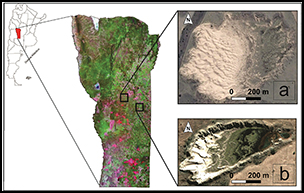Article contents
The South American agricultural frontier: the first direct evidence for maize consumption in San Luis, Argentina
Published online by Cambridge University Press: 26 October 2018
Abstract

The spread of agriculture across the Andes is a topic of intense archaeological debate, particularly the processes driving the adoption of maize (Zea mays) by mobile hunter-gatherer groups of the Central Pampas of Argentina. This paper presents the first direct botanical evidence of maize from the Late Holocene hunter-gatherer sites of El Durazno and La Alborado in the San Luis province—an area considered climatically unsuited to maize production. These data provide important new information on the production, processing and consumption of maize on a macro-regional scale, and the development of Central Pampas exchange systems.
- Type
- Research
- Information
- Copyright
- © Antiquity Publications Ltd, 2018
References
- 1
- Cited by


